The Secret to Finding Prospects
The One-Minute Marketing Plan – Part 2 of 3
I lied. The One-Minute Marketing Plan will be spread out over three blog posts. Okay. Maybe it’s really a Three-Minute Marketing Plan.
Last week we did the prep work for our marketing plan so that this week we could get into the tactical stuff. At last count, there were 1.39 trillion different marketing tactics available to you. Anything over a billion can be a little over-whelming, so in parts two and three of this blog post, we’re going to look at the 8 marketing tactics that really matter. Needless to say, 8 from 1.39 trillion can save you a bit of time.
In today’s post, we’ll consider “Pursuit Tactics” – 4 tactics that will help you proactively go out and find your best prospects. In the last post of this series (next week) we’ll explore 4 “Attraction Tactics” to help your best prospects find you on their own terms.
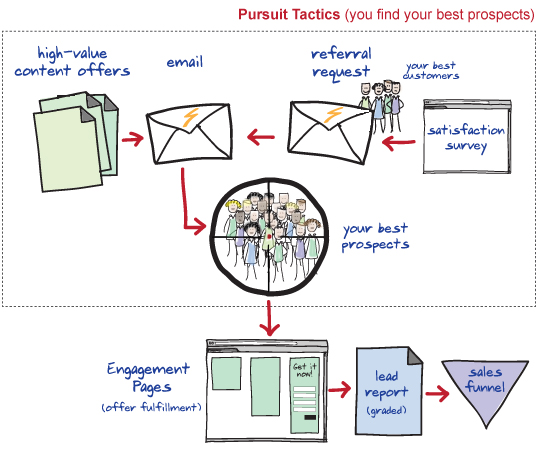 Pursuit Tactics Workflow
Pursuit Tactics Workflow
Tactic 1: Engagement Pages
For everything that follows (Attraction and Pursuit Tactics), you’ll need a set of Engagement Pages (or a landing pages) – one for every offer you developed in Step 1 (number 9). Your Engagement Pages live on your domain (as in “YourCompany.com”) and allow your best prospects to exchange their contact information for one of your offers by completing the webform that is presented.
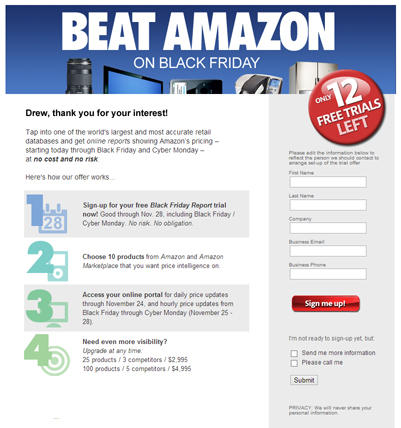
Sample Engagement Page
Why is this important? Because it gives your best prospects the chance to identify themselves to you as being a possible candidates for your solution. You might even assume that the more offers they download from you and/or the “higher up” the content they select is (i.e. a trial request would be a higher level offer than an analyst white paper), the more qualified they are as a prospect.
How do you build an Engagement Page, and how do you know how many or what type of offers your prospects have downloaded from you? You can use an inexpensive landing page service like Unbounce.com which will provide you with a WYSIWYG landing page builder, the ability to use your own domain (even though they host your landing pages), and downloadable lead reports that show you exactly what conversions, by name, your landing pages have produced for you.
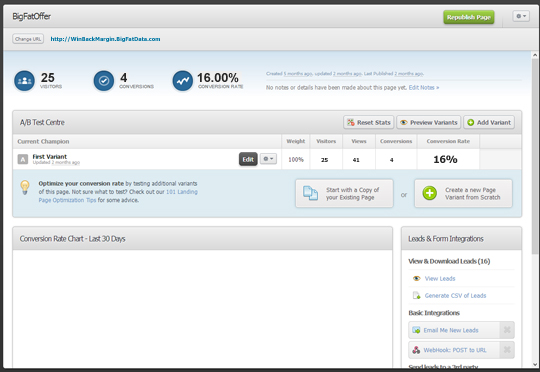 Unbounce.com High-Level Report Page
Unbounce.com High-Level Report Page
Tactic 2: A Series of Regular Email Campaigns
Every email you send to your prospects should contain an offer to engage with you. Without an offer, it will be very hard to measure what success you’re having or not having. Using the value proposition and prospect list you built in Step 1 (numbers 4 and 8), you need to create one email campaign for each one of your offers. Start by emailing your prospects your most entry-level offer (e.g. an analyst report or a white paper), and do so in batches of 50-100, as described in Step 1. That will allow you to find out what works best and what doesn’t, as you go.
You may want to explore the use of Billboard HTML email, as discussed in an earlier post, because we’ve seen over 200% improvement in open and clickthrough rates with this kind of approach. In general, though, you should plan on mixing-up your email approaches (see samples here).
Your goal is to send out an email campaign to your list once a month (the first week of the month is a good bet) to see if you can persuade your best prospects to “put up their hands” by transacting for an offer on your Engagement Page. Once a prospect takes you up on an offer (that is, they fill-in your webform and download an offer), the next month you would send them your next level up offer to try and match their decision cycle needs with the added-value content you have available.
If a prospect doesn’t take you up on your email offer, keep sending it to them until they either sign-up or opt-out. You can try different subject lines and, if you have the resources, try different offers to see if you can’t move them to some sort of action. At the end of the day, any action (opting-in or opting-out) is better than no action.
Tactic 3: Provide an Escape Hatch
The problem with building a best prospect list, of course, is that you have no idea where in their decision cycle your best prospects are. If you did have this information, you could tailor your email offer to each prospect’s needs, likely producing a better outcome. To work around the fact that you may not know where your prospects are in their decision cycles (particularly early-on in your relationship with them), make sure your email offers and your Engagement Pages include an “escape hatch” offer.
 Sample Escape Hatch Offer
Sample Escape Hatch Offer
Your escape hatch offer can say something like:
“Not seeing what you need? Visit our Learning Hub to find a full range of tools and documents on [the solution area you address goes here]”.
This would point your prospect to a web page you would have set-up that contains a small feature on every offer you’ve developed. By clicking on any one of the featured offers, your prospect would be taken to the matching Engagement Page for hopeful conversion. With a little ingenuity, you can set-up this kind of Learning Hub page in Unbounce.com, as well.
Escape hatches aren’t perfect, but they do enable slightly higher conversion rates, and every percentage point counts!
Tactic 4: Referral Programs
This is where we put the best customers you interviewed in Step 1 to work. Since you’re developing short lists of individuals at companies who should, by all rights, be customers of yours (see Step 1, number 6 and 7), share portions of these lists (maybe ten names) with your best customers and ask them if they know any of these people. If they do, ask for an introduction. You may run up against competitive issues from time-to-time (“I don’t want them to know about you”), but you may also be surprised at how often you best customers are willing to help you succeed. Suffice it to say, a personal introduction can be a real short-cut to developing a meaningful relationship with a best prospect.
Next up, the final installment of the One-Minute Marketing Plan: Attraction Tactics.
About Drew Williams
My name is Drew Williams. I’m an author and marketing entrepreneur. “A what?”, you say. I call someone who’s passionate about building businesses a marketing entrepreneur. So that’s me. Full Profile | Google+



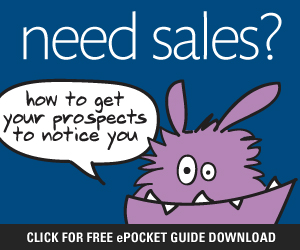

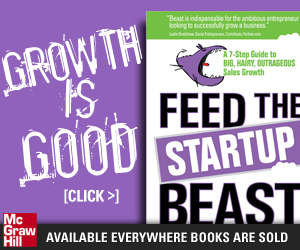
Recent Comments